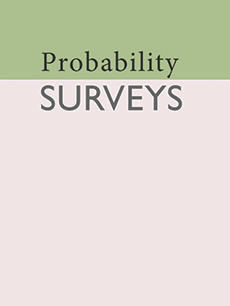Abstract
In this paper, we review the history, current state-of-art, and physical applications of the spectral theory of two classes of random functions. One class consists of homogeneous and isotropic random fields defined on a Euclidean space and taking values in a real finite-dimensional linear space. In applications to continuum physics, such a field describes the physical properties of a homogeneous and isotropic continuous medium in the situation, when a microstructure is attached to all medium points. The range of the field is the fixed point set of a symmetry class, where two compact Lie groups act by orthogonal representations. The material symmetry group of a homogeneous medium is the same at each point and acts trivially, while the group of physical symmetries may act nontrivially. In an isotropic random medium, the rank 1 (resp., rank 2) correlation tensors of the field transform under the action of the group of physical symmetries according to the above representation (resp., its tensor square), making the field isotropic.
Another class consists of isotropic random cross-sections of homogeneous vector bundles over a coset space of a compact Lie group. In applications to cosmology, the coset space models the sky sphere, while the random cross-section models a cosmic background. The Cosmological Principle ensures that the cross-section is isotropic.
For the convenience of the reader, a necessary material from multilinear algebra, representation theory, and differential geometry is reviewed in Appendix.
Acknowledgments
We are grateful to Victor Abramov for useful discussion on principal bundles.
Citation
Anatoliy Malyarenko. Martin Ostoja-Starzewski. "Tensor- and spinor-valued random fields with applications to continuum physics and cosmology." Probab. Surveys 20 1 - 86, 2023. https://doi.org/10.1214/22-PS12
Information





